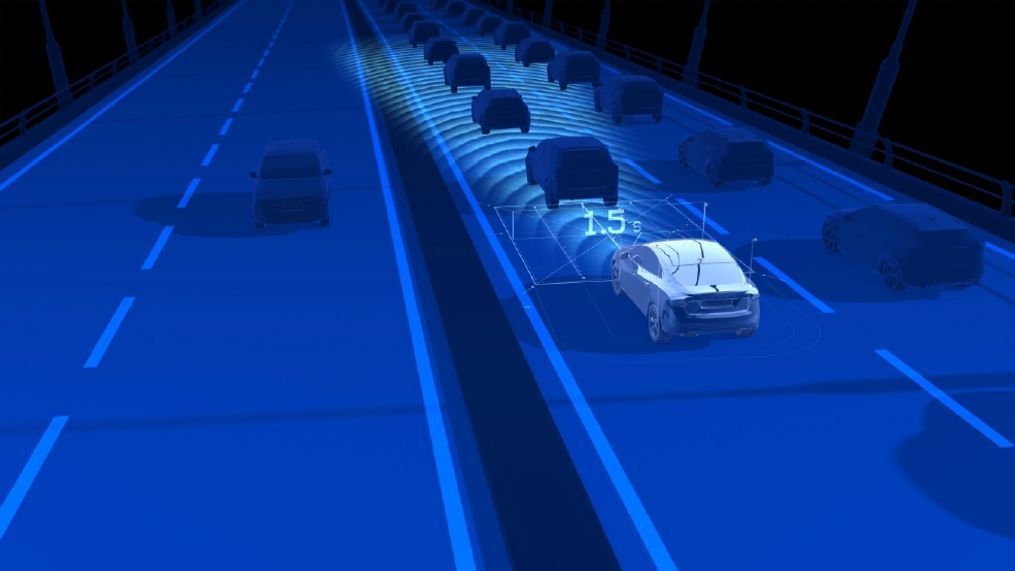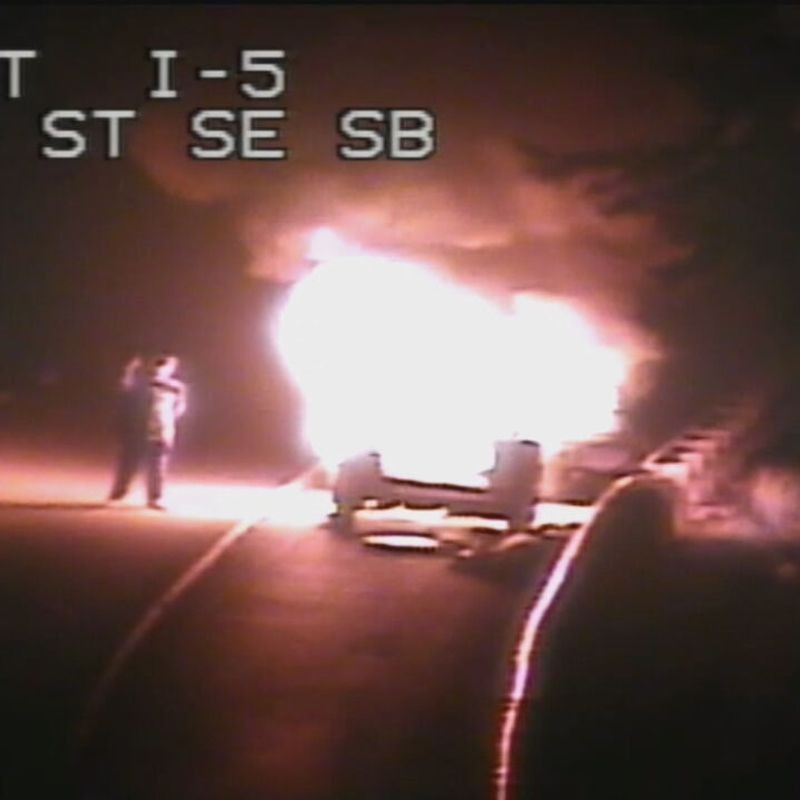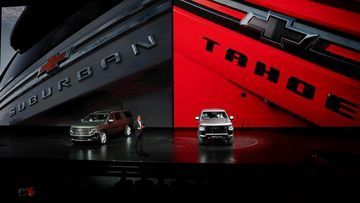The future is now! Autonomous tech is already in cars of today

February is traditionally one of the worst weather months for those states experiencing winter. It's plagued with nasty snow and ice storms and weather-induced traffic jams. All this tends to make winter driving miserable.
Well, what if you could have your car delivered to your doorstep? Or if you could watch a movie from the driver's seat rather than white-knuckling a snowy commute home?
It may seem like a pipe dream, but it isn't.
Though industry experts disagree on the timing of self-driving cars, one thing they do agree on is: It's coming. In fact, several autonomous features already exist in cars you can buy right now.
Whether fully autonomous cars are 1 year or 10 years away, here are some features that help make driving a little less fretful and a whole lot safer.
Adaptive cruise control: Similar to cruise control, adaptive cruise control lets you set the speed and forget it. But it's smarter than regular cruise control because when you get behind a slower moving car, the ACC automatically slows you down as well. When the slower moving traffic clears, then the speed of the car increases to the previously set limit. Some systems, like those in the Chrysler 200 and Hyundai Genesis, are so advanced that they can take the car to a complete stop, and then bring it back up to speed again. How does it work? ACC uses radar to measure traffic in front of the vehicle, and the driver can set the preferred follow distance based on comfort level - usually between 2 seconds and 4 seconds of follow time behind the car in front.
Adaptive headlights: This nifty feature allows the headlights to swivel at the same time as the steering wheel, which gives the appearance that the light bends around corners. Thus, rather than pointing directly ahead at the bushes or trees as the road turns, you can actually see what's around the curve. Some vehicles, such as those from Mazda and Subaru, even offer automatic high-beam control, turning your brights on and off automatically depending on whether there is oncoming traffic.
Automatic emergency braking: This feature is pretty self-explanatory. It is usually a part of an advanced safety suite of features that tries to help prevent a crash. Using radar, if the car senses a crash is imminent, it can automatically apply braking. Often it is paired to a visible and audible warning in an attempt to get the driver to engage. Some systems can take the car to a complete stop without any aid from the driver.
Autopilot: Making a bolder step toward complete autonomous driving, some automakers are offering autopilot systems that allow the car to drive almost completely by itself under certain circumstances. Mercedes-Benz, for example, currently offers a system called Intelligent Drive that allows drivers to go hands-free for about 10 seconds, but a new system revealed in the 2017 E-Class, called Drive Pilot, will go even further. It purports to allow hands-free driving for longer stretches, autonomous passing maneuvers and the ability to park itself remotely.
Backup collision intervention: Similar to systems in play during forward driving, backup collision intervention pays attention to what's behind you -- even if you don't. Using radar and sonar when in reverse, this system, as seen in Infiniti vehicles, can detect anything from a car to a child on a bike. It'll give audible and visual alerts, and if the driver doesn't react, the car will apply the brakes.
Blind spot monitoring: This feature is most helpful in larger cars and SUVs, but who can argue with an extra set of eyes? Most manufacturers call it blind spot monitoring or blind spot alert, Ford calls it Blind Spot Information System (BLIS). And then you have automakers like Audi that call it "side assist." But it basically works the same from automaker to automaker with slight variations. This feature most frequently includes a visible light on the side mirror that lights up when there's someone in your blind spot. There is often an audible alert as well if you turn on your blinker or start to change lanes while a car is in your blind spot.
Forward collision avoidance: These systems initially were only offered on luxury vehicles, but they are now starting to trickle down into the likes of Mazda and Kia. They typically include a suite of features such as automatic emergency braking and forward collision warnings. Some are less invasive and simply include audible and visible warnings, and others can exert emergency interventions such as brake and steering assists. These systems detect an imminent crash through the use of radar, camera or laser technology. Forward collision avoidance may also be called a pre-crash system or a collision mitigation system.
Forward collision warning: This feature is a part of any forward collision avoidance system and can come in the form of a visible or audible warning. I've seen everything from a red flashing light popping up on a heads-up display to a small alert icon on the behind-the-wheel gauges. The audible alerts I've experienced range from loud tornado-siren-like alarms to light beeps.
Lane departure warning: With all the cameras on cars these days, it should be no surprise that they can detect the yellow and white lines on highways. In most lane departure warning systems, a sound will chime if you get too close to the lane divider without utilizing a turn indicator. In some instances, the system will provide haptic feedback in the form of a vibrating seat or steering wheel to indicate a warning. Most of these systems can be deactivated.
Lane keep assist: These systems have varying degrees of aggressive intervention. In its mildest form, when a camera on the side mirror sees the car creeping toward a lane line, the steering wheel will try to gently nudge the car back into its lane. In its most aggressive form it virtually steers the car for you. I've experimented with the more aggressive forms on closed courses, and I literally took my hands off the wheel while speeding toward a sweeping curve at 55 mph. The car took the curve and stayed smoothly in the lane. After my third time in a row playing with the feature, a few of the cars actually told me to put my hands back on the wheel. This system is both creepy and cool. However, it should be noted that the accuracy of the system depends on the clarity of lane lines. I've driven some cars with lane keep assist through construction zones and the cameras have mistakenly picked up the wrong lines and tried to steer me off the road.
Park assist: Whenever my sister visits me in Chicago, she'll double park her car near a parking spot on the street and wait for me to come meet her. Then she lets me park her car. She, like a lot of people who live in non-urban environments, has never mastered the art of parallel parking. And now she doesn't have to. Ford has lead the charge with its advanced park assist systems, which not only parallel park a car but also pull it out of a spot or back it into a perpendicular space. Several automakers, such as Volvo, Chrysler and Toyota, also include this feature in technology packages.
Rear cross-traffic alert: Busy parking lots are awash with speeding cars and pedestrians paying more attention to cell phones than cars backing out of spots. Rear cross-traffic alert uses a rear back-up camera combined with radar to alert the driver of potential hazards when backing out of a spot. Some systems issue audible-only warnings. Others issue a visible warning on the back-up screen in addition to the audible.
Remote start: Even though automakers like Ford and BMW have been experimenting with systems that will call your car to you with a push of a button, it's not quite ready for public consumption. But the consolation prize is remote start: If you can't call your car to you, at least it can be warm when you get there. The circular start button has been on GM key fobs for a while, but in more recent years, a lot of automakers are offering remote start through apps on your phone. So, you no longer need to have your vehicle in your sights to start it. You could be getting off a plane at the airport, and by the time you reach your car in a remote lot, it'll be nice and warm.
_______________________________________
To find your next new, used or certified vehicle visit www.driveautonow.com today. Local car shopping made easy!












![Image for story: 2020 Hyundai Sonata: Upping the ante on midsize sedans [First Look]](/resources/media2/16x9/full/360/center/80/0757332b-e97b-480c-9b65-b974626ec93e-large16x9_2020HyundaiSonataLimited29.jpg)